Festivals
London Film Festival 2011: The S&S blog
Around the world in 14 films
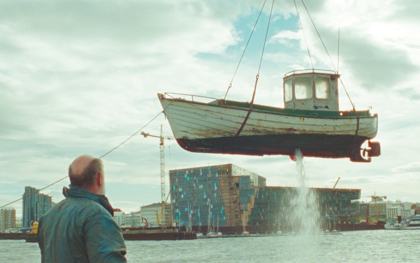
Volcano
Nick Hasted, 26 October
I favour films from countries I love, which finds me first at the London Film Festival’s Icelandic selection. Arni Olafur Asgeirsson’s Undercurrent and Runar Runarsson’s Volcano both look beyond cosmopolitan Reykjavik, the former opening out Otto Geir Borg’s play to take a crew of sharply sketched misfits into the Atlantic on a rusty old trawler. A fatality on their previous voyage intrudes in flashback, and the claustrophobia, comradeship, humour and violence of this traditional occupation are well-caught, as rain and waves lit by the ship’s lights lash it.
Three of the ‘crew’ joined the director for a Q&A, cheerily out of character as they were asked what safety precautions stopped them being swept into the roiling Atlantic. “Our hands,” one explained, demonstrating a firm ship-rail grip. Undercurrent was intended as an elegy for what had seemed a dying way of life in Iceland’s brave new world of banking buccaneers. “Now we’ve gone back to fishing,” Asgeirsson laconically noted.
Volcano begins in the heart of Iceland’s reality, with 1970s footage of the hell-yellow sparks of volcanic eruptions on far-flung islands forcing their inhabitants to evacuate. We meet one of those evacuees, Hannes (Theodor Juliusson), on the day of his retirement. With his Father Christmas figure and beard, he seems a sullen ogre to his wife and middle-aged children. But when, still thinking himself a fisherman, his old tub almost sinks under him, the shock brings to the surface the unspoken love between him and his wife Anna.
Runarsson sets out the realities of old age, from sex to death, with unobtrusive truth. Juliusson’s performance is devastating, mingling stubbornness, loss and nostalgia with soft-voiced dignity. With his boat parked uselessly in his suburban Reykjavik garden, and his longing for a lost rural life, Hanne is emblematically Icelandic. But Hanne (and the camera) settles his gaze on slides of his young married life, the local detail makes his inevitable condition more moving.
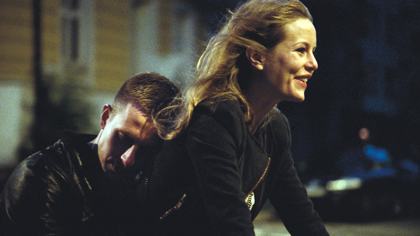
Oslo, August 31st
That’s a strong showing from a country with a population the size of Coventry’s. From Norway’s more established film culture, Oslo, August 31st did its bit for Scandinavian melancholia, following a heroin addict around town on the last day of summer. The fragility of his recovery is chipped away by constant temptation and shame. Cool, clear summer light and quietly rational characters keep audience depression at bay.
“Why is it so sad? Is it only these people?” director Joachim Trier was asked afterwards. “You should come to Norway,” he half-joked, later suggesting a “double-shame” to failing in such a privileged place. He also spoke up for 35mm film, “the most beautiful way to document what’s in front of you” – in this case the “strange, hidden beauty” of his home city, vanishing under redevelopment as he filmed.
Nick James has written about the disappointment of Oren Moverman’s James Ellroy-originated bad cop film Rampart. When Moverman took the stage afterwards with Woody Harrelson (star of this and their previous collaboration The Messenger), he described the film he thought he’d made, and why it honourably fails.
Ellroy’s script was, he said, “out of control”, requiring “the biggest studio film ever made”. Overman’s extensive rewrite involved a deliberate “clash of agendas”, working out from Ellroy’s intention to “exonerate” the corrupt 1990s LAPD, personified by Harrelson’s bad man with a badge. Israeli Moverman found an outsider’s perspective on a “fucking hot” city where interiors (and so his film) are defensively dark, and anyone might go violently mad.
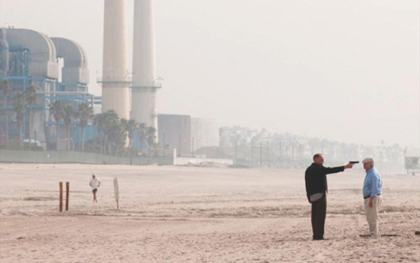
Rampart
This was all fascinating, but couldn’t compete with Harrelson (excellent in Rampart, especially in his too few scenes with Robin Wright, who’s reliably riveting on her own downbound train). “The last thing you want after a heavy film is to struggle to make conversation with some drunk bastard up here spouting nonsense,” Harrelson observed, admirably summing up the average Q&A experience. Tugging his collar open and happily buzzed, he freewheeled from then on with a wicked glint in his eye.
Co-star/producer Ben Foster added his own undiplomatic barb when a woman mentioned the ending left her “dissatisfied”. “When were you last truly satisfied?” he snapped back. “I’m with my husband,” came the reply, “so I can’t really answer that.”
That was my Hollywood highlight. Two documentaries caught the beginning of America’s 1960s counter-culture, and one of its ends. Alex Gibney’s “immersive documentary” Magic Trip finally edits Ken Kesey and his Merry Pranksters’ copious footage of their 1964 trans-American ride on their psychedelically painted bus ‘Further’, with On the Road’s speed-rapping hero Neal Cassidy at the wheel.
Kesey had shown me the reels when I interviewed him in 1998 in Oregon, where the Pranksters had gone to ground. His ongoing inability to finish the film was part of a wider failure; when the acid-tripping crew accidentally ‘integrated’ a black-only Southern swimming area, they ran a mile on realising their mistake. Kesey was always as much redneck as hippie, and the Pranksters had largely pulled up the drawbridge on their rump country kingdom when we met. Kesey, though, flashed charisma and mischief, and the film catches both him – a blue-eyed young Brando – and the pre-comedown American 60s at invigorated peaks.
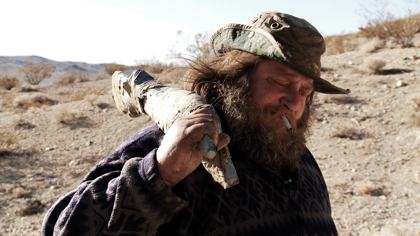
Darwin
Far more rugged American individualists are to be found in Nick Brandestini’s Darwin, the name of a former silver-mine boom town in California’s Death Valley, population now just 33. Each character is a documentarian’s dream. It’s “a place where government and commerce has all but evaporated,” Brandestini notes, a Dodge City in its last days, which even the most hard-headed here believe will end soon; the apocalypse is due, the otherwise acerbic postmistress says, next year.
Like Kesey’s gang, these are cowboys and hippies, libertarians and survivalists; extreme Americans. A stoic ex-miner who has been in Darwin since 1953 remembers its wild days, which did for his wife Lucky, killed in a bar-fight. “All we’re here to do is consume and waste,” an old anarchist, one hand useless since a nearly fatal OD, states of the unfriendly country beyond. “Everything’s set up to be ugly, and I don’t want to be part of it.” Brandestini lets the eccentricities pile entertainingly high, making the crowd I saw it with howl. He also leaves everyone their often tragic dignity.
The same could be said of Lawrence of Belgravia. Paul Kelly’s film was flagged up for 2006’s LFF, making this documentary as much a triumph over adversity as the music of its subject, ex-Felt and Denim singer Lawrence, who is shown in a state of raw, lank-haired poverty, making pop as a matter of survival. A flurry of documents, detailing huge rent arrears, heroin addiction and homelessness, summarise his harsh recent life.
“The only way I can carry on making music is that I’m insane,” Lawrence explains. A flaw of the film is that the raw chunks of music it shows him working on give little hint of his ability; ‘The Osmonds’, his majestic reverie on the 1970s, is cut off too soon. His dry Midlands wit and resilient childhood dreams of stardom on Top of the Pops (which he has outlived) sweeten what would otherwise be an uncomfortably voyeuristic tale.

Lawrence of Belgravia
The British film causing the biggest stir is Carol Morley’s Dreams of a Life (written about in Sight & Sound’s November issue; there were long queues for returns at a sold-out NFT1 screening. I haven’t seen it yet, but can put in a word for Dexter Fletcher’s directorial debut Wild Bill. A duplicate ticket found me sitting in Fletcher’s seat, alongside the cast and Jamie Oliver. An usherette gave me the bum’s rush with such panache I barely noticed until I was deposited in the back row.
The Essex and East London-heavy audience meant this tale of a Stratford hard man (Charlie Creed-Miles) reconnecting with his kids on a rough estate got the familiar laughs it deserved. Copious swearing, crack-smoking and child drug mules make it ripe for dreary social realism, but this is actually a very well-observed and performed, sharply funny family film. Just not for the sort of family the LFF tends to attract. Fletcher can’t find his way out of the bind he puts his characters in without fairytale contrivance. But his film, which has UK distribution, deserves to be a sizeable hit.
Two last stops on my tour: the Dreileben trilogy, also featured in S&S’s November issue, is a haunting achievement from Germany, arising from discussions between directors Christian Petzold, Dominik Graf and Christoph Hochhausler on what their country’s cinema could be. Each film radically shifts in perspective as an escaped killer goes on the run but, made for German TV to avoid the ‘festival film’ ghetto, this is no cold experiment. Watching Petzold’s Dreileben 1: Beats Being Dead on a preview DVD in my flat alone at 3am, I was so appalled at an unexpected crime that I cried out and reached towards the screen, to rescue the victim. It had the shock of seeing someone hit by a car. It’s to be hoped Dreileben gets some sort of proper release here.
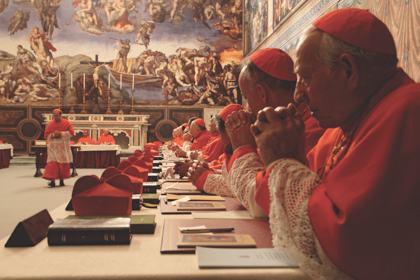
We Have a Pope
Finally, Nanni Moretti’s We Have a Pope is evidence of the growing cultural criticism in Italy’s newly confident, perhaps soon post-Berlusconi cinema. It follows the election of a compromise, unexpected candidate as Pope, leading to his mental breakdown and visceral rejection of a role supposedly ordained by God.
French veteran Michel Piccoli’s performance as an old man first catatonic with shock, then going on the lam in Rome – a king secretly abroad among his people, trying to remember who they are – attains broken tragedy. Moretti’s own scenes as a liberal psychologist who keeps the cardinals busy with a volleyball tournament outstay their welcome. But as writer-director, he fashions a careful exploration of Catholic faith today.
So, by the way, does Alice Rohrwacher’s debut Corpo Celeste, intimately observing a 13-year-old girl’s rejection of a small Southern Italian parish’s claustrophobic rites. And a quick word for Andrea Molaioli’s The Jewel, a true-crime thriller about a venal, doomed Italian corporation, with Il Divo’s star Toni Servillo and some of that film’s swagger too. Italy is coming into its own towards the LFF’s end.
See also
Jar City reviewed by Kate Stables (October 2008)
Dear Wendy reviewed by Roger Clarke (August 2005)
Aprile reviewed by Chris Wagstaff (April 1999)
The moon in May: Agnieszka Gratza sees Corpo Celeste at Cannes (May 2011)
Maestros and mobsters: Nick Hasted on a new generation of Italian filmmakers finding its voice (May 2010)
